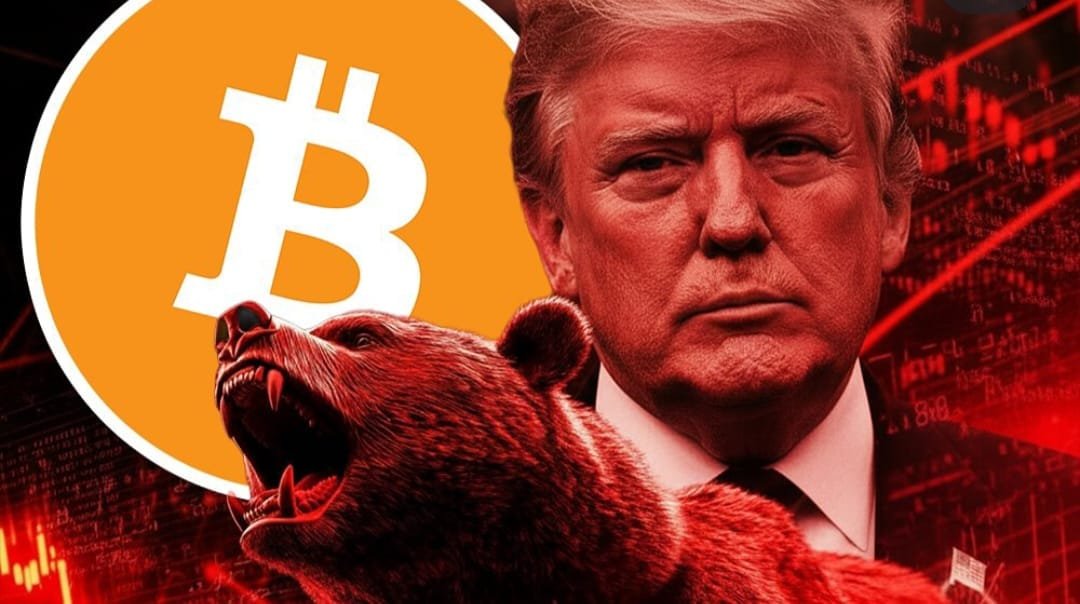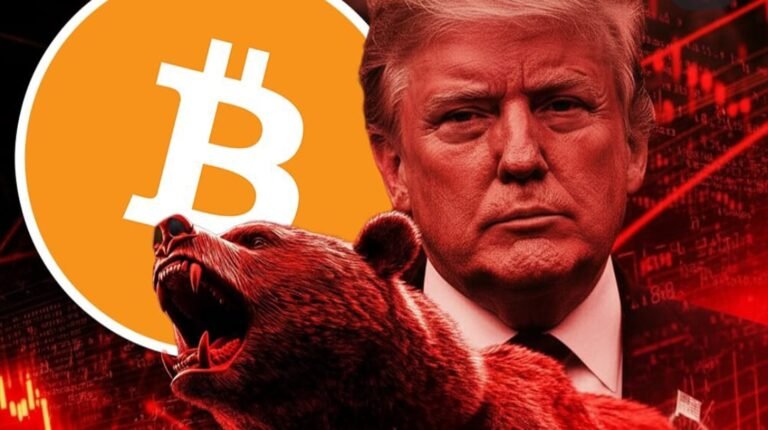
Ethereum and other altcoins lost billions in value following political announcements
How a Reality Show Judge Bleeds $19 Billion in the Crypto Market Crash
On Friday morning, a hurricane struck as most of the world’s giants were beginning to lose their cool, while an earthquake struck the financial markets. This earthquake wasn’t caused by any technology company or any major outcome, but by Washington, D.C., which was the origin of a political statement. In a single, dramatic move, US President Donald Trump announced a 100% tariff on all imports from China. This marked the beginning of a new and dangerous chapter in the global trade war. Traditional stock markets Wall Street, the Shanghai Composite, and European traders immediately plunged into the red. But this time, the flames also engulfed a world that positioned itself as separate and independent from traditional financial institutions the world of cryptocurrencies.
Within hours of the announcement, the total market cap of the crypto market plummeted by more than $19 billion. Ethereum, which was positioning itself as digital gold, plummeted by thousands of dollars in minutes. Ethereum, Solana, and thousands of other altcoins were bleeding like rivers of blood. Small-time investors, dreaming of overnight riches, saw nothing but red on their screens. This article isn’t just an account of the $19 billion loss. This is a testament to the deep connection that has now formed between politics, global economics, and decentralized finance (DeFi). We’ve tried to understand, layer by layer, how a decision made in the White House could impact the code running on Kik. This story is about doctors, greed, technology, and ideology.
The Domino Effect: Why Crypto Markets React to Global Politics
Cryptocurrency has always been argued to be a solution to the problems of traditional financial investors. It has spiraled out of control and should not be influenced. But this incident dealt a severe blow to this theory. There were not one, but several psychological and economic reasons behind the crypto market’s downturn. “Risk-Off” Mentality: This was the biggest and most important reason. Whenever a major crisis or crisis occurs in a global industry, investors go into “risk-off” mode. What is this? This means that investors begin shifting their money from riskier investments (such as stocks, shares, and crypto) to safer and more stable investments (such as the US dollar, government bonds, and gold). They focus on preserving their capital rather than making profits.
Crypto’s Position: Cryptocurrency is still considered one of the world’s riskiest (high-risk) instruments. Its scalability fluctuates rapidly (highly volatile). When the world’s two largest economies are interconnected, entrepreneurs are unlikely to consider putting their capital at risk. They immediately launched their own cryptocurrencies to buy cash or gold. This mass selling was the primary cause of the decline.
The Risk of Unforgettable (Waterfall of Liquidations)
This is an intrinsic and destructive feature of the crypto market, transforming the category into a tsunami. How does it work? Every leveraged portfolio has a “liquidation market.” If the price drops to that level, the pricing automatically closes the portfolio (i.e., sells their crypto to the market) to limit the trader’s losses. Domino Effect: When the district began to decline after Kiall’s announcement, it triggered a sell-off among hundreds of leveraged traders. The surge automatically triggered billions of dollars’ worth of stocks and other cryptocurrencies to be sold on the market.
This online sell-off further inflated the market’s stocks, leading to inflation and a subsequent decline. These newly leveraged societies listed even more traders’ products. The Human Face of Losses – Who Drowned, Who Saved? $19 billion sounds like a lot, but it’s not just a number. Behind it are the stories of millions of people their dreams, their savings, and their mistakes.
Behind the $19 billion number are millions of individual stories on Crypto Market Crash
Retail investors: Millions of young people in countries like India, Vietnam, and the United States invested a portion of their savings in crypto. They were caught off guard by the “To the Moon!” slogans on social media. Many of them invested at a time when the market was already at its peak. They lost 50-70% of their capital. This was not just a financial loss for them, but also a psychological blow.
Leveraged traders: This was the group that suffered the most. In their quest to become rich overnight, they used heavy leverage. When Or was it? When the market crashed, their entire capital was wiped out in a matter of minutes. Social media was abuzz with stories of “rekat” (ruin), with people sharing screenshots of their plunging fortunes.
Crypto Companies and Projects: Many new crypto projects had invested their capital in their own cryptocurrencies or other volatile currencies. This decline significantly reduced the value of their capital, making it difficult for them to pay their developers and run the project.
Whales and Smart Money: On the other hand, “whales” (people or institutions holding large amounts of crypto) often take advantage of such opportunities. According to several reports, while small investors were selling in panic, some whales were buying crypto at steep discounts. They saw this drop as a “buying opportunity.” Experts’ Views and Future Direction Following this event, the financial world was divided into two camps.
Expert Opinions and Future Outlook on Crypto Market Crash
Longtime critics of crypto, such as economist Peter Schiff and followers of Warren Buffett, had the opportunity to say, “We’ve already said that.” Their argument: They said that this incident proves that crypto has no intrinsic value. It’s merely a speculative activity that rises on good news and collapses on bad news. They argued that crypto can never become “digital gold” or a “safe haven investment” because it is even more vulnerable to political and economic shocks than gold.
Supporters: On the other hand, crypto’s staunch supporters called this a temporary setback. Their argument: They argued that the crypto market is still young and immature. Over time, as it grows larger and more decentralized, it will more easily withstand such shocks. They cited previous crashes (such as in 2018 and 2021), after which the market has always rebounded to new highs. They believe it was merely a “shock,” where weak hands were driven out of the market, while strong hands were retained.
Conclusion: The Emergence of a New Reality on Crypto Market Crash
Trump’s announcement of 100% tariffs and the subsequent $19 billion collapse in the crypto market is not a one-day news. It marks a historic turning point in the evolution of digital finance. It has exposed the invisible thread that connects the corridors of power in Washington to the world of decentralized blockchain. This event taught us that as long as the money invested in crypto belongs to humans, it will continue to be influenced by human Emotions fear and greed. And humans always react to the world around them, the decisions of their governments, and economic uncertainties. The dream of crypto freedom is not dead yet, but its definition has changed. Now it’s not about “complete separation” from financial systems, but about creating an “alternative system” that can coexist with the traditional world.




